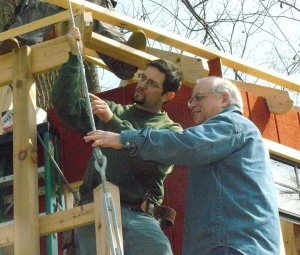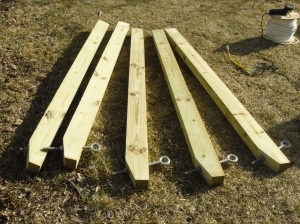A builder should look first to the tree to dictate what type of support system to use. If the treehouse to be built is more than a basic rectangular platform, the best choice for support is probably a flexible support system. The weight or size of the treehouse doesn’t necessarily determine whether joints need to be flexible or not, it is the tree. Flexible supports allow for the tree to move in the wind, lessening the stress of your structure. The biggest concern is when the building is done closer to the ground. The wind that a tree catches can swing the whole tree around quite a bit. In some parts of the world, the leaning and bending that a tree is subjected to is quite powerful. Nearer the ground, the trunk acts like a giant lever, magnifying the strength of the wind into an incredibly powerful force that only moves an inch or two.
An inch or two, however, is actually a relatively large movement, translating to a force that’s large enough to lift a ton of weight. A fixed system will be under immense pressure, and will easily break. If a treehouse will be subjected to these type of forces, a flexible system is the way to go.
When a support system employs one end of a beam that is fixed while the other end allows for tree movement, there is no build up of pressure and the platform will withstand strong movement. During a violent storm or high winds the treehouse itself may get damaged, but that is a design concern specific to the house and not to be confused with tree movement. When in doubt ask a professional builder or structural engineer.
YELLOW LIGHT
If you have any doubts about what bracket to use don’t hesitate to run your plan by an engineer familiar with treehouses. Let them give your plans a solid review for just the cost of a few hours time. A few dollars spent beforehand could save a lot of money and frustration down the road.




